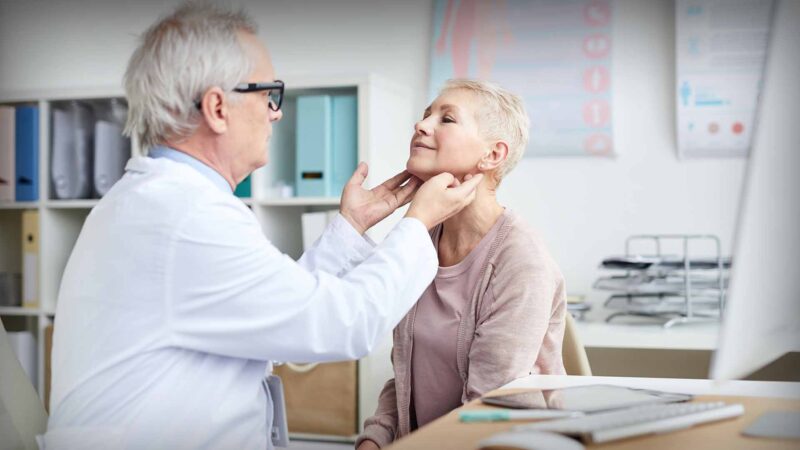PROJECT CASE STUDY Lower back pain presentations in ED
Central Adelaide Local Health Network (CALHN)
With
Professor Anne Burke, Lead
South Australian Chronic Pain Statewide Clinical Network
Commission on Excellence and Innovation in Health &
Co-Director, Psychology and Allied Health Lead,
Central Adelaide Local Health Network
Joseph Orlando, Physiotherapist
Central Adelaide Local Health Network &
PhD Candidate, University of South Australia
PROJECT CASE STUDY SEGMENT
Filmed in Adelaide | November 2025
Around 70 percent of people will experience lower back pain at some stage of their lives.
A recent study conducted over five years found one in three people suffering from lower back pain presented to hospital via an ambulance.
In many cases people will attend an emergency department when they feel they can’t manage their pain or when treatments by community healthcare services have been ineffective or inaccessible due to location or cost. However, 90 per cent of people can get better on their own in a few weeks.
Professor Anne Burke, Lead, South Australian Chronic Pain Statewide Clinical Network, says the data found in an emergency department setting, people with lower back pain receive biomedical care that is delivered at a high cost, with a high impact to the system, but ‘likely provides limited benefit to the patient’.
“While emergency departments will always be there to assist with severe pain or life-threatening situations, early community-based intervention is often far more effective for lower back pain,’’ she says.
The South Australian Chronic Pain Statewide Clinical Network within the Commission on Excellence and Innovation in Health has redesigned the pathways for lower back pain-related care.
The SA Health Urgent Care Hubs at Woodville and Sefton Park have partnered to provide more options for the timely care of lower back pain outside of the emergency department. This includes physiotherapist digital support, via a recently launched website, at home during the recovery period.
A review is also being done in conjunction with the South Australian Ambulance Service to investigate how lower back pain is managed by its responders.
Central Adelaide Local Health Network Physiotherapist, Joseph Orlando, says the project was designed to develop trusted evidence and support to the community in understanding and managing pain.
“Very few cases of lower back pain are related to serious pathology,’’ says Mr Orlando.
“The Optimal System of Care for Low Back Pain, which was developed by the South Australian Chronic Pain Statewide Clinical Network in consultation with industry and consumer partners, is designed to bridge the gap between the emergency department and community-based care.”
The study into back pain cases in South Australia was led by senior allied health staff within the Central Adelaide Local Health Network, the Commission on Excellence and Innovation in Health and the University of South Australia, with funding support from the Allied and Scientific Health Office.
Source: Central Adelaide Local Health Network website
You Might also like
-
Awareness campaigns and HCP Toolkits for thyroid health
In 2021, the Australian Thyroid Foundation released analysis to show, well over 1 million Australian are living with an undiagnosed thyroid disorder, including thyroid cancer, lower IQs, lifelong disability, and a causal or possible contributory factor – in the development of other neurological disorders such as ADHD and autism. Some of the challenges for diagnosis and treatment can be addressed by producing material for health care practitioners during patient presentations.
‘Recent statistics show well over 1 million Australians are living with an undiagnosed thyroid disorder, awareness and testing can prevent unwarranted outcomes for mothers and their babies’ says ATF CEO Beverley Garside OAM
The Australian Thyroid Foundation has lodged a Pre-Budget Submission for the Federal Budget 2024-25 to counter increasing misinformation on social media creating dietary deficiencies such as an increasing number of young women, who are planning pregnancy or already pregnant opting for plant based milks such almond, soy or oat milk coffee as an alternative to standard cow’s milk, which is a source of iodine and alternate milks do not include.
-
Maximising benefits, minimising harms in population health screening
Population screening is an important contributor to advancing health outcomes through the early detection of and successful intervention for chronic disease. The evolution of science, technology and evidence relating to diseases which are or may be amenable to a population screening approach deserve broad discussion and the sharing of expertise and evidence. They also warrant close scrutiny in context of health policy and health resource allocation considerations.
In March, Public Health Association of Australia (PHAA) convened Screening Conference Conference 2025 with the theme of ‘Population Screening for Chronic Disease – Maximising Benefits, Minimising Harms’.
-
Strengthening Evidence Through Health Research Where Most People Access Healthcare
In February 2025, the Australian Government committed over $22 million for primary care research, including $5.2m awarded to Professor Michael Kidd, Director of the International Centre for Future Health Systems at UNSW and recently appointed Australia’s Chief Medical Officer, to lead the establishment of one of the largest research collaborations in Australia focused on improving primary care.
The Royal Australian College of GPs says a new national multidisciplinary consortium for primary care research is a positive step forward to improve patient care.



